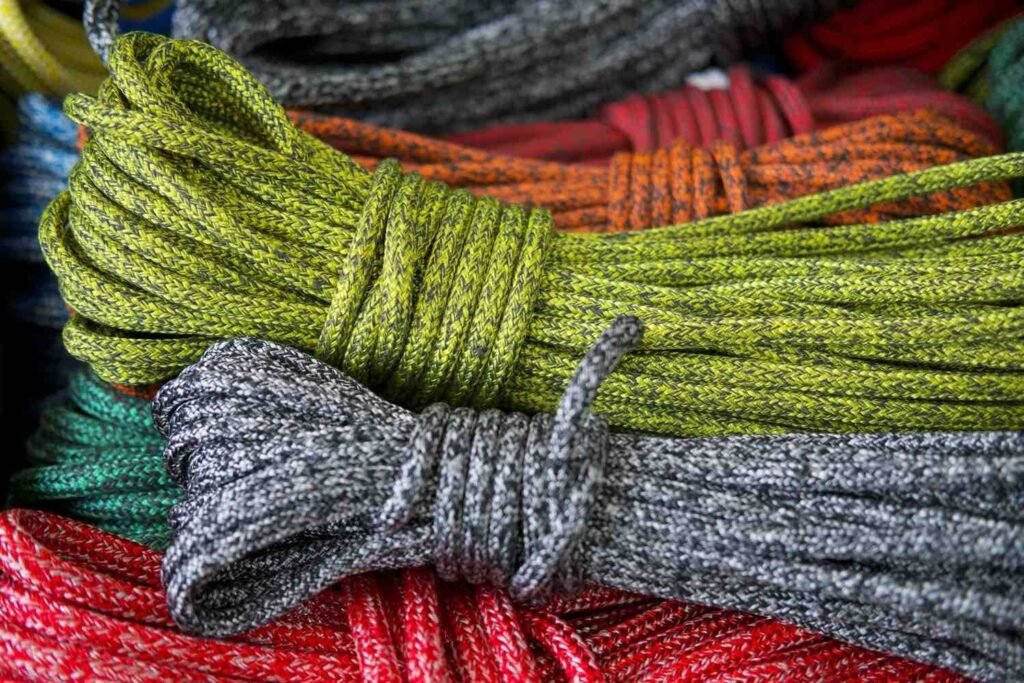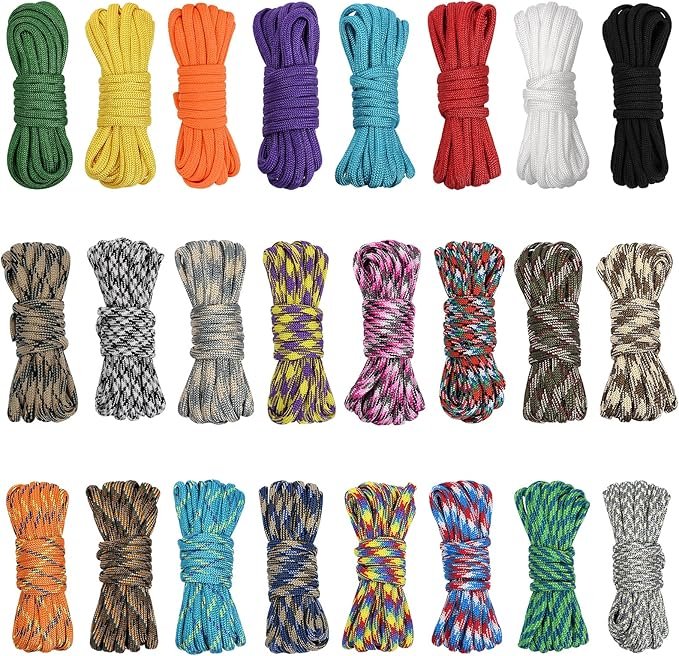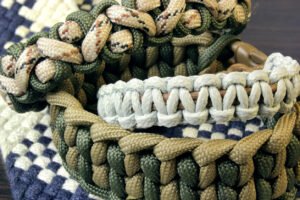
Why Choose Polyester Rope?
In a world of complex materials and high-tech solutions, sometimes the most reliable choices are the ones that have been perfected over time. When it comes to strength, durability, and versatility in synthetic fiber ropes, one name consistently stands out: polyester. But with several options available, from the stretchiness of nylon to the buoyancy of polypropylene, the question remains: why should you choose polyester rope?
This comprehensive guide will explore the unique properties, advantages, and ideal applications of polyester rope, providing you with the knowledge to make an informed decision for your next project.
The Fundamental Chemistry: What is Polyester Rope?
To truly appreciate its value, it helps to understand what polyester is.
- Synthetic Polymer: Polyester is a category of long-chain synthetic polymers, engineered for performance rather than being a product of nature.
- Manufacturing Process: Continuous filaments of this polymer are spun into yarns, which are then twisted or braided by a skilled rope manufacturer into the final rope product.
- Engineered Precision: This process allows for precise control over characteristics like diameter, strength, and flexibility, resulting in a material that is incredibly resilient against the elements.
The Key Advantages: What Makes Polyester Rope Special?
Polyester offers a well-balanced portfolio of properties, making it a reliable all-rounder.
1.Superior Strength and Low Stretch
- Minimal Elongation: Exhibits only 3-5% stretch, unlike nylon, which can stretch over 15%.
- Critical Applications:
- Sailing: Holds sail shape accurately for optimal performance.
- Lifting & Rigging: Ensures precise positioning and control of heavy loads.
- Towing & Winching: Provides direct pulling power and reduces dangerous “snap-back” if broken.
2. Excellent Abrasion and Wear Resistance
- Surface Durability: Withstands repeated rubbing against rough surfaces like rock, dock pilings, and metal hardware.
- Long Service Life: This toughness translates directly into a longer lifespan and better value.
- Quality Construction: A reputable rope manufacturer often uses tight braids (like double braid) to further enhance this innate property.
3.Remarkable Resistance to Water and Weather
- Hydrophobic: Does not absorb water, so it doesn’t become heavier or significantly weaker when wet.
- UV Resistant: Highly resistant to degradation from sunlight exposure.
- Chemically Inert: Not easily damaged by oils, solvents, or most chemicals, making it ideal for harsh marine and industrial environments.
4.Flexibility and Hand Feel
- User-Friendly: Remains flexible and is known for a good “hand”—comfortable to grip and easy to work with.
- Easy to Work With: It is straightforward to knot, splice, and coil, reducing user fatigue.

Polyester vs. Nylon: The Classic Showdown
The choice isn’t about which is “better,” but which is better for your specific need.
| Feature | Polyester Rope | Nylon Rope |
|---|---|---|
| Stretch | Low (3-5%) – Ideal for static loads | High (15%+) – Ideal for shock loads |
| Wet Strength | Retains nearly 100% strength | Loses up to 10-15% strength when wet |
| Water Absorption | Does not absorb water | Absorbs water, becoming heavier |
| Primary Use | Stability, precision, running rigging | Shock absorption, dock lines, climbing |
The Simple Analogy: Nylon is like a bungee cord (great for shock absorption). Polyester is like a flexible steel cable (great for stability and precision).
Ideal Applications: Where Polyester Rope Truly Shines
Given its properties, polyester is the preferred choice in numerous fields:
- Marine & Boating: The top choice for sailing halyards and sheets, dock lines, and mooring lines due to its low-stretch and weather resistance.
- Industrial & Construction: Used for lifting, hoisting, lashing, and tie-downs where durability and safety are paramount.
- Outdoor & Recreational: Perfect for tent guy lines (it won’t stretch and sag), arborist pull lines, and general utility work.
- Sports & Fitness: Commonly used in tug-of-war ropes due to its minimal stretch under constant force.
Choosing Quality: The Role of a Reputable Rope Manufacturer
Not all polyester ropes are created equal. The rope manufacturer‘s expertise is crucial.
- Construction Method: Look for consistent, high-quality builds like double braid for the best balance of strength and handling.
- Material Quality: A trusted manufacturer uses high-tenacity, UV-stabilized polyester filament.
- Quality Assurance: Rigorous controls ensure consistent strength and diameter throughout the entire rope, guaranteeing performance and safety.
Care and Maintenance: Maximizing Lifespan
Proper care will extend the life of your polyester rope significantly.
- Clean: Rinse with fresh water after exposure to saltwater, dirt, or chemicals.
- Inspect: Regularly check for signs of excessive abrasion, cuts, or heat damage.
- Store: Keep coiled in a cool, dry, dark place away from prolonged direct sunlight.
- Protect: Use chafe guards where the rope contacts rough surfaces to prevent localized wear.

The Environmental and Cost-Effectiveness of Polyester Rope
Beyond its physical properties, polyester rope offers significant practical advantages in terms of cost and sustainability, which are crucial factors for both businesses and individual users.
- Long-Term Value and Durability:
- While the initial purchase price of a quality polyester rope might be higher than some alternatives like polypropylene, its exceptional durability and long service life make it more cost-effective in the long run.
- Its resistance to abrasion, UV rays, and moisture means it does not need to be replaced as frequently, reducing long-term costs and waste.
- Environmental Impact Considerations:
- As a synthetic material, polyester is not biodegradable, which is a consideration for environmental stewardship. However, its long lifespan is a form of waste reduction.
- The rope manufacturer industry is making strides, with some companies now offering recycled polyester rope, made from post-consumer PET bottles, which helps to reduce plastic waste.
- Compared to the production of some natural fibers, the manufacturing of polyester rope can have a lower overall environmental footprint in terms of water and land use.
- Recyclability:
- At the end of its long life, polyester rope can potentially be recycled by specialized facilities, contributing to a circular economy, unlike composites that are difficult to separate.
Understanding Rope Construction: Braid vs. Twisted Polyester
The performance of a polyester rope is not solely determined by the fiber; the way it is constructed plays a pivotal role. Understanding these differences helps in selecting the right tool for the job.
- Double Braid (Braid on Braid):
- Structure: Features a braided core protected by a tightly woven braided sheath. This is the most popular construction for high-performance applications.
- Advantages:
- Excellent Strength-to-Diameter Ratio: Very strong for its size.
- Superior Flexibility and Hand Feel: Easy and comfortable to handle.
- Spliceable: Ideal for creating strong, permanent eyes and loops.
- Great Abrasion Resistance: The sheath protects the load-bearing core.
- Ideal For: Marine running rigging, winch lines, and any application requiring high strength and smooth handling.
- 3-Strand Twisted (Hawser Lay):
- Structure: The classic, traditional rope construction, made by twisting three strands together.
- Advantages:
- Economical: Generally less expensive to manufacture.
- Easy to Splice: While different from braid splicing, it is a well-known and reliable method.
- Good Grip: The textured surface provides good grip in hands and on capstans.
- Ideal For: General purpose use, dock lines, mooring lines, and agricultural applications.
- Plaited (8-Strand or 12-Strand):
- Structure: Features a interwoven, tubular construction that is round and smooth.
- Advantages:
- Resists Kinking: More resistant to kinking than twisted rope.
- Good Flexibility and Strength: Offers a balance between the two.
- Ideal For: Marine dock lines and other applications where a firm, kink-resistant rope is desired.

Conclusion
So, why choose polyester rope? The answer is clear when your priorities are unwavering stability, exceptional abrasion resistance, and long-lasting durability.
It is the intelligent, reliable choice for the vast majority of marine, industrial, and utility applications where consistent performance is non-negotiable. Before your next purchase, consider the demands of your task—chances are, a high-quality polyester rope from a trusted rope manufacturer is the exact solution you need.



